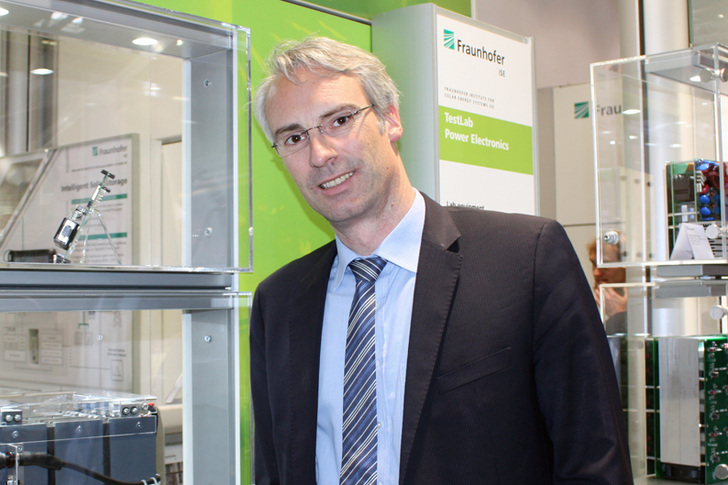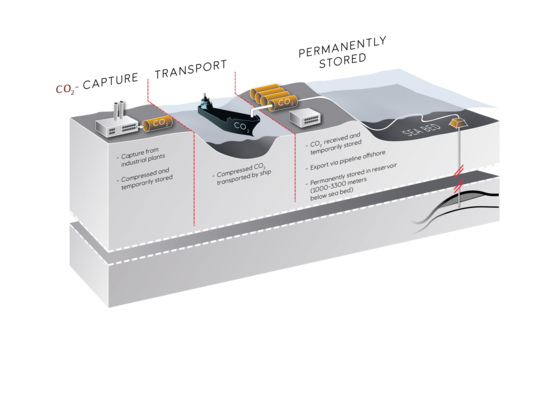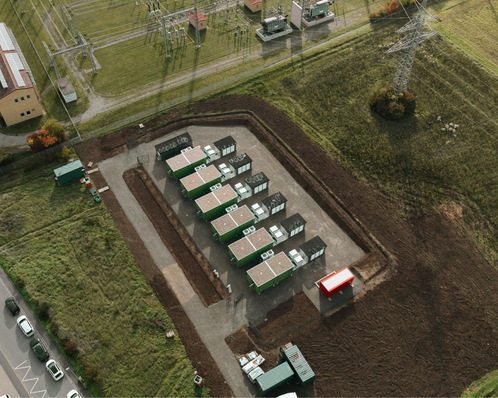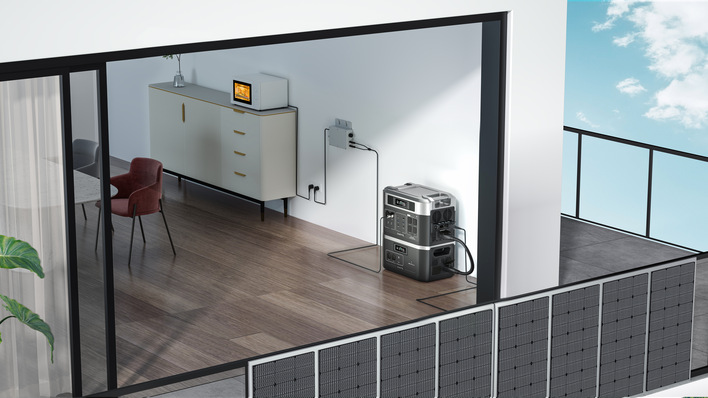Battery storage units in PV often run on 48 volts. Why?
There is a history to that. Battery systems in combination with PV used to be exclusively used as off-grid installations. In the majority of systems, it was undesirable for voltages to exceed 48 volts (at the nominal operation point) or 60 volts (at full charge of led batteries), because it was impossible to know what the users would end up doing with the batteries. Only with low voltages could the systems be operated safely with respect to touching and handling. When going out in the field while working in rural electrification, you see the wildest modifications and re-wirings imaginable. It has happened that users have simply bypassed the charging controller and hooked up the load wires directly to the battery. At 12, 24 or 48 volts this could be done without posing too great a risk from direct contact.
We are talking about storage units to be sold in Germany, Austria and Switzerland. Is protection against accidental touching an issue here?
Not so much, of course. Storage units are connected up to the grid and are usually installed by professional technicians within an enclosed housing. The end user would not think of interfering with or manipulating the system. But the battery inverter technology still harks back to off-grid era: They include transformers and only work at low DC voltages. Because they use transformers, they are less efficient than transformer-less units. Back-up functionality was added later.
Between 2012 and 2014, Germany had two years of a bonus for self-consumption, as legislated by the EEG. Was that what got grid-connected storage units going?
Without question, that was the initial impulse. Since then, the bonus has been replaced by more of a penalty: the proportional EEG levy on installations larger than ten kilowatts. In order to quickly introduce a product to the market, already existing off-grid battery inverters were also used in on-grid storage units. These still tend to be low-DC voltage transformer inverters.
Meanwhile with string inverters, the trend was clearly going towards non-transformer units?
Exactly. The transformer units do show decent efficiency at nominal load, although it deteriorates sharply at partial loads. And it declines faster than with non-transformer inverters. The majority of the battery’s operating states are within the partial-load range, however.
Can you give a specific example?
It is possible for battery inverters to achieve 95 percent efficiency when charging and discharging at nominal load. At partial load, efficiency can drop rapidly, an average of 90 percent can be expected. For charging and subsequently discharging, this results in an effective level of efficiency of 81 percent. In PV applications, a sound led acid battery is operated at 80 and 85 percent efficiency, which combined can be an overall level of efficiency as low as 65 percent in the worst case. Ergo: Approximately one third of the energy is lost.
What would these numbers be for a lithium battery?
A lithium battery system is 95 percent efficient, multiplied by the inverter’s effective efficiency of 81 percent, results in an overall efficiency of almost 77 percent. So this setup still wastes a lot of energy.
What alternatives are there?
You can increase the voltage of the battery systems, creating what is known as high-voltage batteries. There are already a few first suppliers in the market, who connect to the inverter’s intermediate circuit. With single-phase inverters, it is possible to generate 230 volts AC from the battery’s roughly 325 volts DC. If applicable, a DC-DC converter is used to connect low-voltage battery system to the inverter’s intermediate circuit.
How are voltages used in three-phase systems?
With three-phase inverters producing 400 volts AC, you can get about 600 volts DC from the intermediate circuit. Cars also utilise high-voltage systems of 350 volts DC. At such high voltages, inverters do not require transformers, and so an average efficiency of up to 95 percent can be achieved.
Isn’t the voltage of high-voltage batteries much closer to that of PV installations than of the lower-DC voltage batteries?
The string inverters of our solar generators produce up to 1,200 volts DC. High-voltage batteries make better use of that. At the ISE in Freiburg, we have installed a led lithium hybrid battery that works at 1,000 volts. The system is centrally earthed, resulting in voltages of plus and minus 500 volts.
What are the advantages of high battery voltages?
Higher voltages require smaller cells – i.e. cells with less ampere hours – if additional DC-DC converters are to be avoided. However, small round cells like these have different properties than larger cells.
On the other hand, having DC-DC converters in front of the battery gives greater flexibility and makes it easier to choose what large battery cells to use. Generally speaking, at constant load requirements, higher voltages result in weaker currents and thus smaller energy losses.
The eventual use of the battery also needs to be considered: Whether it is primarily supposed to produce output or provide energy?
The lithium ion sub-system of the hybrid battery that we have developed at the ISE only has a capacity of 11.55 kilowatt hours. The voltage of the system is 1,000 volts. Temporarily, it can produce 46 kilowatts at 4 C; and for 30 seconds, even 6 C are possible. To make due without DC-DC converters, we had to use low-capacity cells. The lithium part of our hybrid battery system was always designed as a high-performance battery, whereas the led sub-system was going to take on the part of energy storage.
So designing the batteries is not trivial?
Absolutely not. For example, some manufacturers do not include round cells. Others prefer to use large lithium cells. In the end, the entire system needs to be effective. Cell formats, voltage levels and power electronics as well as the interplay of battery and energy management have to match in order to achieve high overall efficiency at acceptable cost and long battery life.
What trend can you see?
The logical conclusion is battery inverter systems without a transformer and at higher input voltages, because encased batteries no longer allow unauthorized access. Thus, protection against accidental contact is no longer such a pressing issue, while intelligent battery management systems are protecting against total battery discharge.
What will catch on: integration of the battery into the DC circuit or the AC system?
There is one manufacturer that integrates the battery on the DC side of the inverter, right into the solar string, also connected to the PV inverter, making an additional inverter unnecessary. However, that requires two DC converters – a buck converter for the battery and a boost converter connecting to the inverter. The battery is controlled based on the AC output of the inverter. Other manufacturers connect the battery system to the intermediate DC circuit of an inverter with separate connectors to the PV array and the battery. I believe that AC-coupled systems using highly efficient battery inverters are important particularly when retrofitting. Just like efficient string inverters, you can integrate them at a later stage. Especially when retrofitting higher-power systems, AC coupling is more flexible, because it allows grid access even for systems without their own local PV. My feeling is that DC-coupled systems would tend to be better for smaller batteries.
(HS/IR)
---
Did you enjoy reading the interview "What goes into designing an effective high-voltage battery? Dr Vetter of the Fraunhofer Institute for Solar Energy explains"? Also, discover, what Santiago Senn, director of LG Chem Europe on pv Europe had to say about innovation in storage systems, markets and distribution and which opportunities Andreas Piepenbrink, the CEO at E3/DC sees for the energy storage market.







